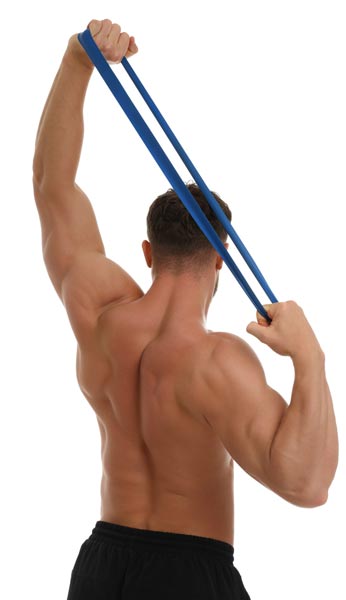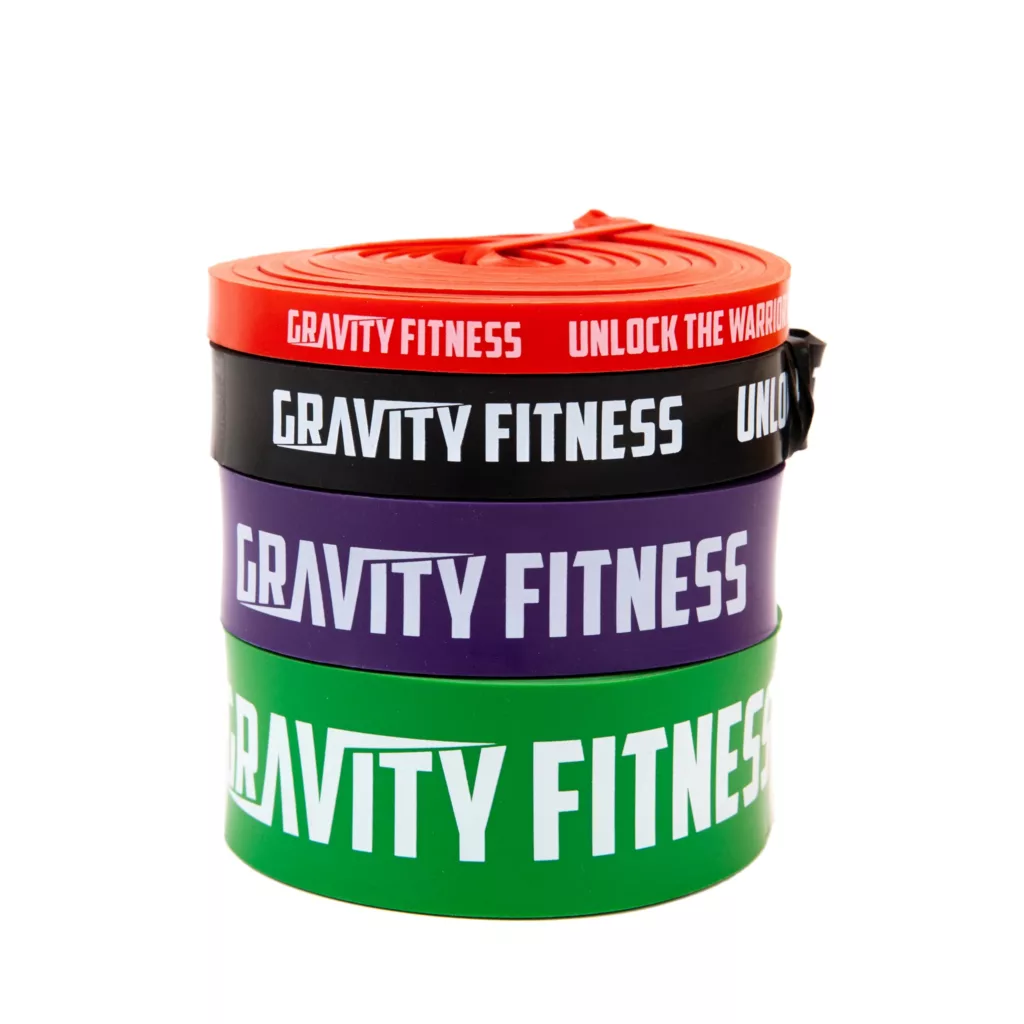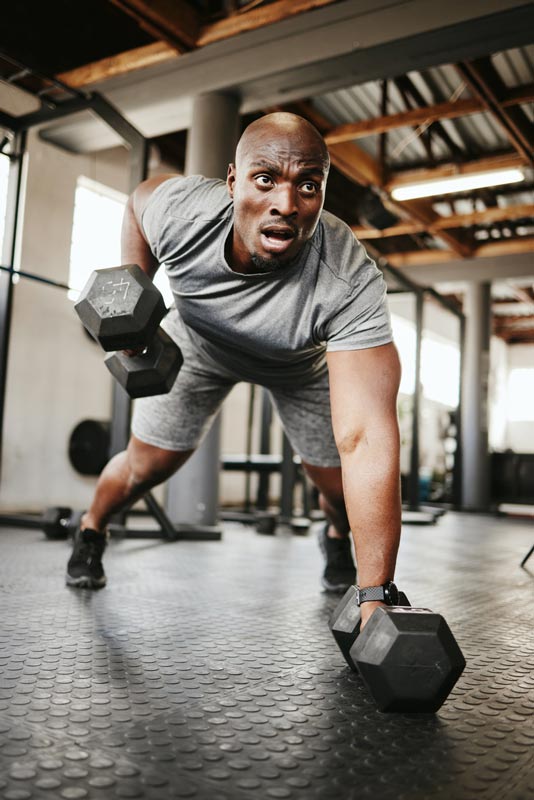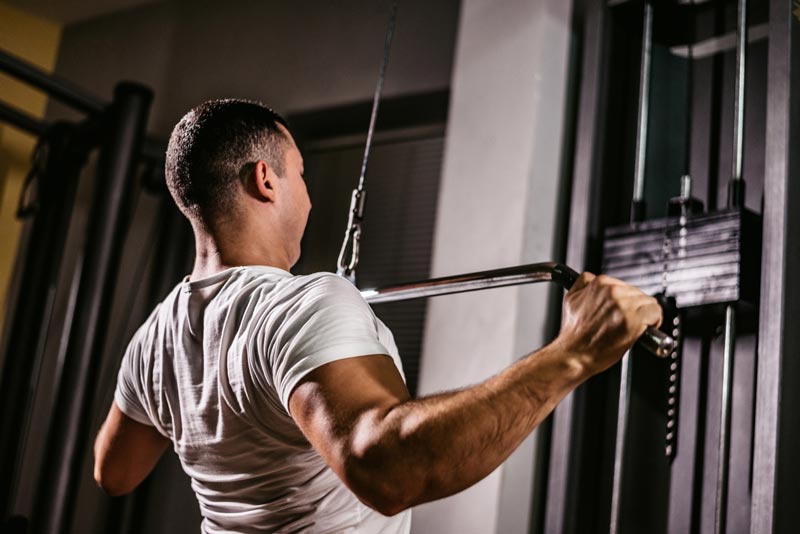Say that you’ve mastered the pull-up, what’s next? What if you don’t have a pull-up bar at your disposal? These pull up alternatives work similar muscles and help you to improve your pull-up power.
We already know that pull-ups are one of the best full-body exercises to add to your gym program but what about pull up alternatives? There’s nothing wrong with adding variety to your training program by trying new things.
Whether you’re a beginner gym goer looking to do a pull-up or an athlete wanting to develop your strength, the pull up substitutes we’ve picked below have something for everyone. Let’s dive in!
What Are The 10 Best Pull-up Alternatives To Build Strength And Power?
Most of the pull up alternative exercises below require minimal equipment or just a resistance band and a set of kettlebells. They work great alongside the pull-up bar exercises we discussed in our previous article!
They’re presented in no particular order and can be programmed according to your available equipment and exercise goals.
No time? Take a quick look at the list below:
- Resistance Band Pull Aparts.
- Straight Arm Pulldowns.
- Inverted Rows.
- Renegade Rows.
- Towel Rows.
- Seated Cable Rows.
- Barbell Bent Over Rows.
- One Arm Dumbbell Rows.
- Wide Grip Lat Pulldowns.
- Close Grip V Bar Pulldowns.

Resistance Band Pull Aparts
Resistance band pull-aparts are a scapula retraction exercise that use an isolation movement pattern to target your upper back muscles.
They are great as part of a warm-up, workout, or to develop better posture. Make them a staple in your lifting routine as a pull up alternative at home.
GRAVITY FITNESS PULL UP BAR
Portable, versatile, home fitness
- Highly versatile- suitable for a full range of exercises including pull ups, dips, leg raises, incline press ups and front and back levers
- Extended height: 192cm
- Compact position height: 120cm
- 3-year warranty against manufacturer defects
- Carry bag included
ONLY £139.95 £109.95
How to:
- Stand with your feet shoulder-width apart. Hold a resistance band out in front of you gripped at shoulder-width apart.
- Take a deep breath in and bring the band out laterally as you extend both arms outwards.
- Squeeze your shoulder blades together and pause briefly at the top position.
- Exhale and bring your hands back together under control.

If you’ve got time, check out our best resistance bands for pull-ups article!

Straight Arm Pulldowns
Straight-arm pulldowns are a favourite for many bodybuilders around the world. By using a straight arm position when pulling down, you’re efficiently working your lat muscles and training your core.
How to:
- Anchor a band to a high location such as the top of a door frame or pole. A cable machine with a straight bar attachment can also be used.
- Stand in front of the anchor point and grasp the band/ bar. Take a couple of steps back until you feel a stretch in your lats. Your arms should be straight in front of you.
- Take a deep breath in. Keep your chest and head up throughout the movement.
- Bring your arms straight down towards your knees, keeping them straight. Squeeze your last at the bottom position.
- Exhale and return to the start under control.

Inverted Rows
Inverted rows are a perfect assisted pull-up alternative as they use the same muscle groups and a very similar movement pattern but are easier to perform.
They can form part of a well-organised periodisation program when looking to progress your pull-ups at home or in the gym.
Trust us, these are definitely worth including!
How to:
- Using a smith machine or squat rack, set a barbell up at around knee height.
- Sit under the bar and grasp the barbell using a slightly wider than shoulder-width overhand grip.
- Bring your legs in front of you until your body is in a straight line. Keep your hips and chest up with your core engaged throughout.
- Retract your shoulder blades. Bring your chest towards the bar. Pause briefly at the top position.
- Exhale before lowering your body back to the starting position.
GRAVITY FITNESS PULL UP BAR
Portable, versatile, home fitness
- Highly versatile- suitable for a full range of exercises including pull ups, dips, leg raises, incline press ups and front and back levers
- Extended height: 192cm
- Compact position height: 120cm
- 3-year warranty against manufacturer defects
- Carry bag included
ONLY £139.95 £109.95

Renegade Rows
Renegade rows are a fantastic pull up alternative that works the same muscles as a pull-up and help you to build strength and stability in your shoulders and core.
All they require is a pair of dumbells to get started. I’m sure most of you have these in your home gym!
How to:
- Place a pair of dumbbells on the floor shoulder-width apart.
- Assume a press-up position with your hands on the dumbbells and shoulders directly above. Your arms should be straight with your chest up and your head facing down.
- Inhale deeply and engage your core. Row one dumbbell directly upwards by bringing your elbow directly backwards. Use your other hand to balance on the other dumbbell.
- Once the dumbbell is at your ribs, pause briefly before slowly returning to the starting position.
- Alternate each arm for the desired number of repetitions.
Towel Rows
Towel rows are great for the minimalist among us. We know pull-ups are great, but sometimes it’s cool to go back to basics.
All you require is a towel and a suitable anchor point. Little tip – use a longer towel if you want a greater range of motion.
How to:
- Wrap a towel around a secure anchor point at around head height. Stand in front of it and grasp it with both hands using a neutral grip.
- Bring both feet under the anchor point and lean back so your arms are fully extended.
- Keep your chest up and head facing forward.
- Inhale and engage your core. Pull up to the anchor point until your hands are by your sides.
- Pause briefly before exhaling and returning to the starting point.
Seated Cable Rows
If you’ve been going to the gym for a while, chances are that you’ve heard of seated cable rows. They are an old bodybuilding staple of sorts that mimic the bent-over row without the added lumbar spine involvement.
If your back needs a rest from pull-ups and you have a cable machine handy, try them out.

How to:
- Set up in front of a pulley machine with a straight bar attachment.
- Sit on the bench and grasp the attachment using an underhand grip. Keep your knees slightly bent with your arms fully extended. Keep your chest out whilst looking forward.
- Take a deep breath in and pull back through your elbows. Keep your arms tucked into your body.
- Pause briefly at the top position. Exhale and return to the start.

Barbell Bent Over Rows
Bent over rows are another old bodybuilding staple that definitely deserve a mention as a pull up substitute. They can be used to add power and size to your upper body and can be performed using multiple variations to fix weak links in your pull-up.
Definitely a handy exercise to include!
How to:
- Set up a barbell at around hip height. Stand directly over the bar with a slight bend in your knees. Hinge forward until your torso is over the bar.
- Grasp the bar with an underhand grip with your hands shoulder-width apart. Brace your core and take a deep breath in.
- Unrack the bar. Maintain a neutral back position with your chest up and head facing forward.
- Pull through your elbows until the bar reaches your abs. Pause briefly before exhaling whilst lowering back to the starting position.

One-arm Dumbbell Rows
Similar to renegade rows, one-arm dumbbell rows are great for isolating each side at a time. This makes them a good unilateral pull up alternative to build strength and work on muscular imbalances.
How to:
- Set up next to a flat bench with a dumbbell on either side. Place one knee and shin on the bench whilst grabbing the opposite dumbbell. Keep the opposite leg standing.
- Brace your core and take a deep breath in. Bring the dumbbell up to your armpit with your palm facing your body. Maintain a neutral spine throughout the movement.
- Exhale and bring the dumbbell back down under control.
- Repeat for the desired number of reps and switch arms.

Wide Grip Lat Pulldowns
Wide grip lat pulldowns are a classic back-building exercise that help to target your lats by using a very wide hand position.
Focusing on squeezing both your lats when pulling up is a great way to develop a better mind-muscle connection.
How to:
- Assume a seated position under a pulldown machine. Ensure the knee pads are at the correct height.
- Grasp the bar with an overhand grip. Your hands should be slightly wider than shoulder-width.
- Engage your core and keep your chest up. Take a deep breath in and pull the bar down to the top of your chest. Pause briefly.
- Exhale whilst lowering the barbell back to the starting position under control.

Close Grip V Bar Pulldowns
Close grip V bar pulldowns use a similar movement pattern to their wide counterparts but with a narrow and neutral grip.
With your elbows forced to be down and into your sides, they allow more shoulder extension and improve lat activation. They are a great pull up alternative at home or in the gym.
How to:
- Assume the same seated position as stated above for the wide grip lat pulldowns. The main difference is that you will be pulling using a close-grip attachment.
- Grasp the close-grip attachment with an overhand grip. Your palms should be facing inward
- Take a deep breath in and bring the attachment down to your chest. Keep your chest up with your head facing forward.
- Pause briefly and return to the starting position whilst exhaling.
How Often Should I Do Pull-up Alternative Exercises?
In general, it’s suggested to work each muscle group twice per week when looking to maximise hypertrophy. Whilst not all of us have this as our main goal, we can apply this principle to our pull up alternatives.
Use some of the pull up alternatives above alongside some pull up bar exercises to target your back muscles twice a week. Ensure you leave 48 hours between sessions for adequate rest.
Use the rep schemes below depending on your training goals:
- Strength and Power – 3 to 5 repetitions.
- Muscular Hypertrophy – 8 to 12 repetitions.
- Muscular Endurance – 12 to 15 repetitions.
Closing Comments
The pull-up alternatives we’ve listed above provide a great mix of beginner progression movements and challenging exercises. Regardless of your ability level and available equipment, the list we’ve compiled above has something for you.
Try some of them at home or in the gym and let us know how they go!
References
- https://pubmed.ncbi.nlm.nih.gov/35438660/#:~:text=The%20available%20studies%20indicate%20that,variation%20may%20compromise%20muscular%20gains.
- https://pubmed.ncbi.nlm.nih.gov/35044672/
- https://www.ncbi.nlm.nih.gov/pmc/articles/PMC9302196/




